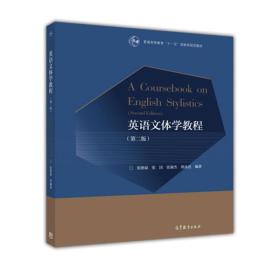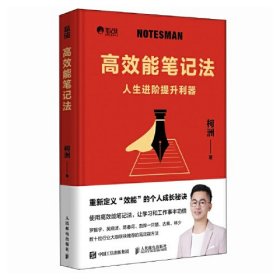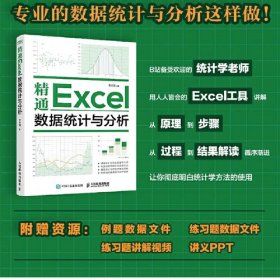
英语文体学教程(第2版)
¥ 21.1 5.0折 ¥ 41.9 全新
库存3件
河北保定
认证卖家担保交易快速发货售后保障
作者张德禄、张国、张淑杰、胡永近 著
出版社高等教育出版社
出版时间2016-03
版次2
装帧平装
货号9787040445787
上书时间2024-11-13
- 在售商品 暂无
- 平均发货时间 27小时
- 好评率 暂无
- 最新上架
商品详情
- 品相描述:全新
图书标准信息
- 作者 张德禄、张国、张淑杰、胡永近 著
- 出版社 高等教育出版社
- 出版时间 2016-03
- 版次 2
- ISBN 9787040445787
- 定价 41.90元
- 装帧 平装
- 开本 16开
- 纸张 胶版纸
- 页数 399页
- 字数 637千字
- 正文语种 简体中文,英语
- 丛书 普通高等教育“十一五”国家级规划教材
- 【内容简介】
-
《英语文体学教程(第2版)》一书共分为四个部分,16章。第1部分包括第1至第5章,是对语言各个层次的文体突出特征的探讨,包括这些特征出现在语言的哪些层次和级阶中,是什么样的突出特征,可以在语篇中产生什么文体效果等。其排列顺序是从易到难,从熟悉到陌生,即第1章从真实语料和对语料的简单分析中获得对文体的感性认识,然后到词汇、语法、语义、语音、文字。
第二部分包括第5至第11章,是对实用文体的分析。语言的实用文体繁多,而且又有层次和功能的不同,所以我们无法对所有的实用文体进行分析,而只能选择有代表性的几个类别作为分析对象。在本部分中,我们选择了口语、新闻、国际商务、法律、科技和计算机和互联网。
第三部分包括第12和第13章,是对文学文体的分析。本部分分别探讨了小说和诗歌的文体特点。
第四部分是理论探讨,包括第14章至第16章,探讨文体和文体学的基本理论、所涉及的因素、理论框架和分析方法等,以及与其他相关理论之间的关系。
第14章谈文体的定义、特点、所涉及的不同层次和不同方面的因素等;第15章讲文体学的理论框架、分析模式、程序、方法等;第16章简单介绍其他相关理论,以及与文体学的关系。 - 【目录】
-
Part 1 he PotentiM Stylistic Features
Chapter 1 Introducing Style
1.1 ATaste of Style
1.2 Style as Saying Different Things in Different Contexts
1.3 Style as Speakers from Different Backgrounds
1.4 Style as Functions of Texts
1.5 The Stylistic Features
Exercises
Chapter 2 Lexicology
2.1 Morphemic Devices
2.2 Lexical Devices
Exercises
Chapter 3 Grammar
3.1 Syntactic Deflection
3.2 Syntactic Incongruity
Exercises
Chapter 4 Phonology and Graphology
4.1 Phonology
4.2 Graphology
Exercises
Chapter 5 Semantics
5.1 Cohesion and Style
5.2 Sentence Groups, Paragraphs and Passages
5.3 Patterns of Text Structure
Exercises
Part 2 Practical Style
Chapter 6 Conversations and Speeches
6.1 Daily Conversation
6.2 Spontaneous Commentary
6.3 Public Speech
Exercises
Chapter 7 News Report
7.1 Semantic Features
7.2 Text Structures
7.3 Grammatical Features
7.4 Lexical Features
7.5 Graphological Features
Exercises
Chapter 8 International Business
8.1 Semantic Features
8.2 Grammatical Features
8.3 Lexical Features
8.4 Graphological Features
Exercises
Chapter 9 Legal Documents
9.1 Function and Style
9.2 Grammatical Features
9.3 Lexical Features
9.4 Graphological Features
Exercises
Chapter 10 Science and Technology
10.1 Semantic Features
10.2 Grammatical Features
10.3 Lexical Features
Exercises
Chapter 11 Computer and Internet
11.1 Computer Language
11.2 Internet Language
Exercises
Part 3 Literary Style
Chapter 12 The Style of Fiction
12.1 The Characteristics of Fictional Language
12.2 The Basic Techniques in Fictional Writings
12.3 The Basic Elements of Fiction
12.4 Lexical and Grammatical Features
Exercises
Chapter 13 The Style of Poetry
13.1 The Poetic Genre
13.2 The Social Functions and Characteristics of Poetry
13.3 The Phonological, Lexical, Grammatical and Multimodal Techniques in Poetic Writings
Exercises
Part 4 The Theory of Stylistics
Chapter 14 The Concept of stile
14.1 Defining Style
14.2 The Characteristics of Style
14.3 The Factors That Determine Style
14.4 The Unit of Analysis in Studying Stylistics
Exercises
Chapter 15 The StudyofStylistics
15.1 The Definition of Stylistics
15.2 The Necessity of Stylistics
15.3 The Theories of Stylistics
15.4 The Modes or Methods of Linguistic Prominence
15.5 The Criteria of Relevance
15.6 The Purpose and Procedure of Stylistic Analysis
15.7 Choice of Aspects for Stvlistic Analysis
Exercises
Chapter 16 Multimodal Stylistics
16.1 Introduction
16.2 Background and Theoretical Foundation
16.3 Multimodal Functional Stylistics
16.4 Multimodal Cognitive Stylistics
16.5 Promises and Problems
16.6 Conclusion
Exercises
Chapter 17 Stylistics and Other Linguistic Disciplines
17.1 Text Linguistics and Discourse Analysis
17.2 Genre
17.3 Conversational Analysis
17.4 Critical Discourse Analysis
17.5 Pragmatics
17.6 Sociolinguistics
17.7 Semiotics
17.8 Psycholinguistics
Exercises
References
Glossary
点击展开
点击收起
— 没有更多了 —












以下为对购买帮助不大的评价